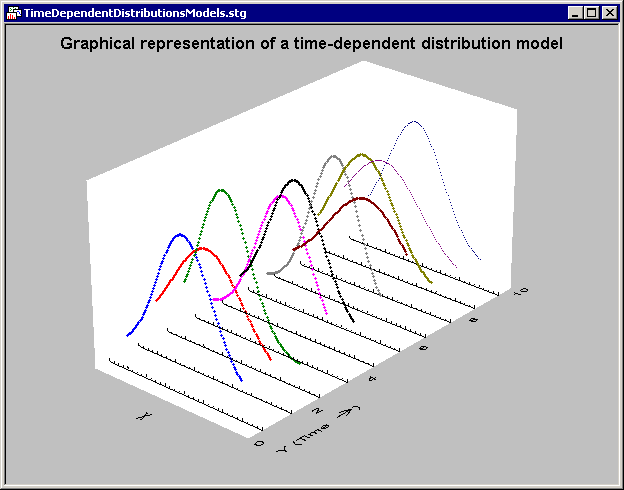Overview of Time-Dependent Distribution Models
The computational methods implemented in and available via the option Process Capability ISO/DIN (Time dependent distribution models) from the Process Analysis – Startup Panel allow users to compute process capability indices consistent and in compliance with DIN (Deutsche Industrie Norm) 55319 (see Deutsches Institut fuer Normung e.V., 2002) and ISO 21747 (see ISO, 2006).
These methods are applicable for situations where consecutive samples of observations are taken from an ongoing production line, and the goal is to estimate the process capability with respect to one or more quality dimensions measured in those samples. Specifically, these standards summarize different distribution "models" for how (1) the observations within each sample can be distributed, (2) how the moments (locations, dispersions, etc.) of consecutive samples can be distributed (e.g., normal, non-normal) over "time," and (3) how best to estimate the process capability based on the resultant distribution (given the distribution of measurements within sample, and across samples/time).
The graph shown here illustrates the basic approach: A variable characteristic X has a specific distribution (location, dispersion, shape) at each point in time (Y). Samples are taken from the process at different times, and hence from different distributions. To accurately gage the true capability of the process, it is necessary to apply the appropriate time-dependent distribution "model" that will specifically account for changes (over time) in location, dispersion, and the type (shape) of the distribution (e.g., normal vs. non-normal). Given an appropriate model, the process capability can then be estimated based on the expected (and/or observed) resultant distribution, given the changes of the individual (instantaneous or at-one-specific-point-in-time-only) distributions.
References
Boos, D. (1986). Comparing k populations with linear rank statistics. Journal of American Statistical Association, 81, 1018-1025.
Deutsches Institut fuer Normung e.V. (2002). DIN 55319: Qualitaetsfaehigkeitskenngruessen. Beuth, Berlin, Germany.
Dietrich, E. & Schulze, A. (1999). Statistical Procedures for Machine and Process Qualification. ASQ Quality Press. (Note: This is an older version, which does NOT discuss 55319!)
Dietrich, E. & Schulze, A. (2005). Statistische Verfahrent zur Maschinen- und Processqualifikation (5., aktualisierte Auflage). Hanser, Munich, Germany.
ISO (2006). International Standard ISO 21747: Statistical methods – Process performance and capability statistics for measured quality characteristics. Switzerland: ISO.

